Journey Through Time Discover The Siddhanchal Jain Temple Caves On Your 2026 Trip
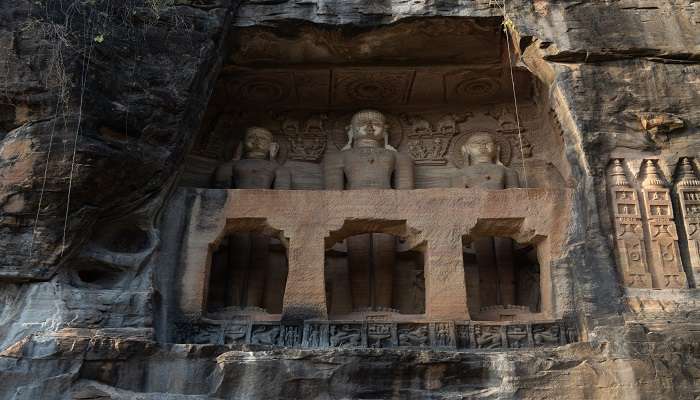
Siddhanchal Jain Temple Caves are nestled in the tranquil landscapes of Madhya Pradesh. It is a timeless symbol of ancient Jain architecture and spirituality. These temple caves are carved into rocky hillsides. They serve the historical and cultural significance of the region. The construction of these temple caves can be traced centuries back, they showcase intricate carvings and pillars with Jain iconography. There are serene chambers for meditation. The region’s rich heritage is preserved as these temple caves attract a lot of tourists from every corner of the country. They offer a glimpse into the spiritual and cultural tapestry of ancient India.
History Of Siddhanchal Jain Temple Caves
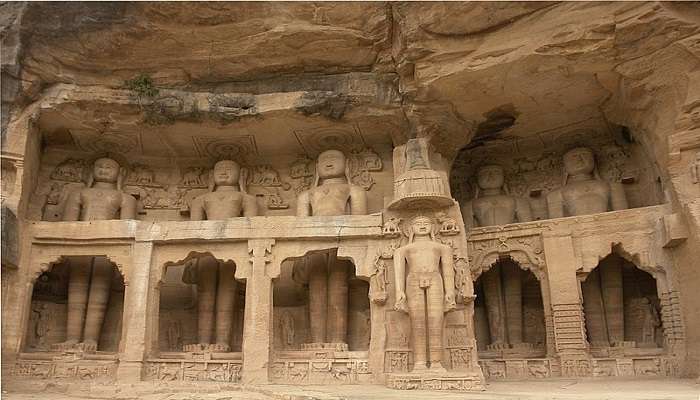
The history of these temple caves dates back thousands of years. Siddhanchal Jain Temple Caves are part of a larger complex of caves situated in the Bhimbetka Region. The temple caves served as important centres for Jainism preaching and meditation. Siddhanchal Jain Temple Caves were originally carved during the 6th and 7th CE. They have undergone different phases of construction over the centuries. These caves flourished during the 10th and 12th centuries under the patronage of prominent Jain Dynasties and local rulers.
The caves also served as a centre of philosophical discourse. It attracted the Jain Monks from all the corners of the country. During the reign of the Gupta Empire, the preachings of Jainism flourished. Sculptures of Jain Tirthankaras were carved on the rocks of these temple caves.
Must Read: Places To Visit In Gwalior
Places To Visit Near Siddhanchal Temple Caves

Siddhachal Caves are Jain cave monuments and statues carved into the rock face inside the Urvashi valley of the Gwalior Fort in northern Madhya Pradesh, India. There are the most visited among the five groups of Jain rock carvings on the Gwalior Fort hill. Here is a list of nearby places of Siddhanchal temple, one can explore :
1. Bhojpur Temple
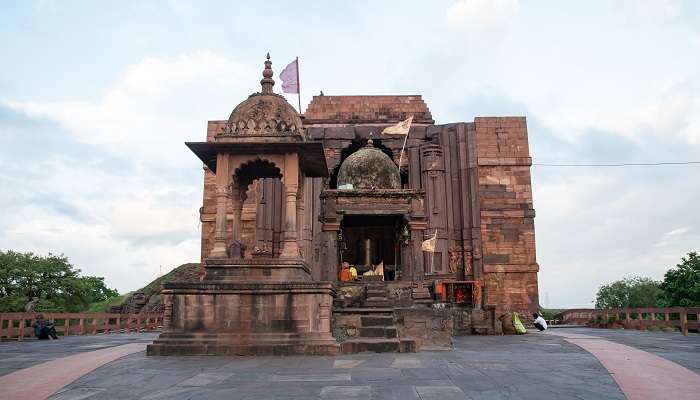
Bhojpur Temple is located near Bhimbetka. This temple is solely dedicated to Lord Shiva. It is renowned for its unfinished Lingam, as one of the largest in India. The temple is a noteworthy stop for all those in the city of Gwalior. The temple’s architectural simplicity and historic significance attract history enthusiasts and spiritual seekers alike. This place was built by King Bhoja in the 10th Century. There are intricate carvings on the exterior walls of the temple. The architectural grandeur draws devotees from every corner of the country. The temple is located on the banks of the Betwa River, providing a serene atmosphere around.
2. Bhimbetka Rock Shelters
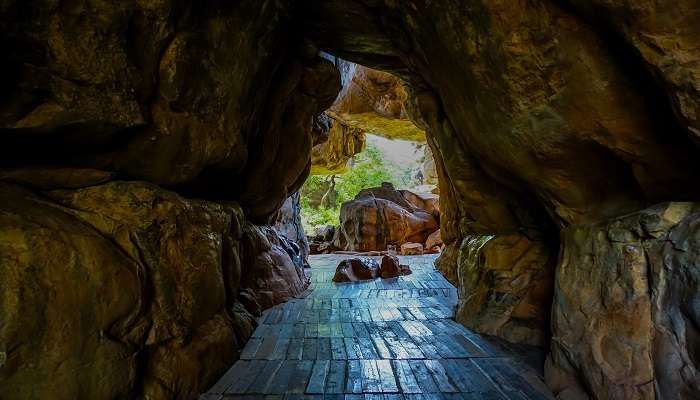
These rock shelters are located close to the Siddhanchal Jain Temple Caves. Bhimbetka Rock Shelters are listed as a UNESCO World Heritage Site. They are renowned for their prehistoric cave paintings. The rock shelters can be dated back to the Palaeolithic Era, depicting scenes of daily life, rituals and wildlife along with flora and fauna of that era. Bhimbetka rock shelters provide an exciting glimpse of the early human civilization and artistic expression. Bhimbetka Rock Shelters offers evidence for the existence of the Stone Early Age. The cave paintings are simply breathtaking.
Suggested Read: Bhojeshwar Temple
3. Raisen Fort
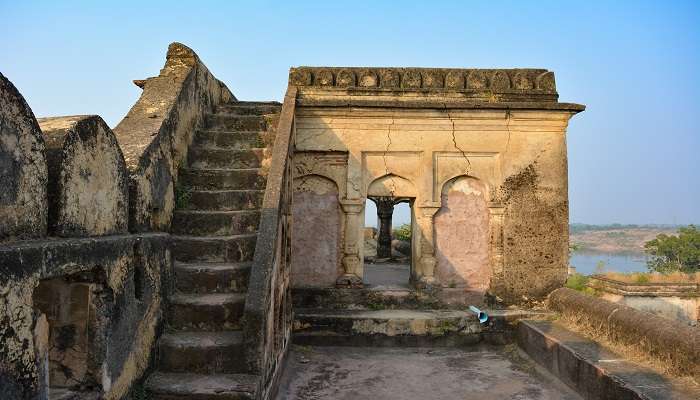
Raisen Fort is perched on a hilltop near Bhimbetka. Raisen Fort is an excellent place to have a holistic view of the broadest vistas of Madhya Pradesh. The fort provides amazing views of the countryside. The lush green plains give you a soothing experience with cool air breezes flowing around. The Raisen Fort was built in the mediaeval period. The massive walk-through of the fort and the huge walls and gateways reflect the importance it held during that period. Visitors are asked to imagine the royal life after witnessing the inner chambers of the fort.
Architectural Style Of The Jain Temple Caves
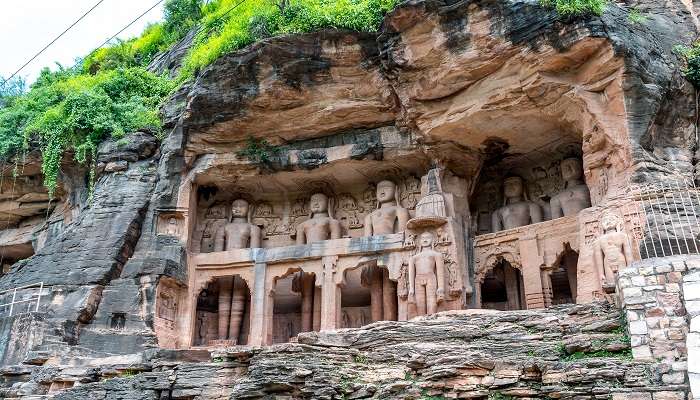
The caves are predominantly rock-cut with beautiful carvings of sculptures on them. They depict Jain Tirthankaras, spiritual teachers and other divine features. There are some preachings engraved too. Excellent craftsmanship is visible on these rocks. The caves have been made directly from the hillsides.
Natural rock formations were used to create spacious caves. Scenes from Jain Mythology are depicted inside the caves. Minute details have been taken into account when carving the clothes and jewellery of these deities. Some caves have mandapas which were used for meditation, religious ceremonies and gatherings. The caves show the mythical creatures, the flora, the fauna and the divine symbols of Jainism.
Suggested Read: Best Hotels In Gwalior
Local Cuisine Of Gwalior

1). Aloo Sabzi and Bedai: Bedai is a traditional morning meal that is made. This dish uses urad dal flour to make puffy bread that is deep-fried. Serve hot, spicy potato curry alongside these crispy Bedai. Every now and then the taste of tomatoes and amchoor enhances the curry.
2). Kachori: Breakfast is served with Kachori Ki Sabzi. Serve the crispy kachori with tangy, aromatic, wonderfully spiced potato curry or green coriander and pudina chutney. The crispy kachori is packed with a spicy lentil or potato mixture. It is also a popular street food.
3). Gwalior Ke Parathe: This is a beloved breakfast dish served in Gwalior. Gwalior Ke Parathe are basically stuffed parathas filled with spicy potatoes, paneer, or minced meat. The parathas are served with pickles or a spoonful of curd.
4). Malpura: A unique dessert delicacy called Malpua is offered in Gwalior. It is celebrated around holidays like Diwali and Holi. These are the sugary pancakes, which are formed with flour, milk, and sugar batter, deep-fried, and then covered in syrup. Chopped nuts and cardamom powder are used as garnish. It can also be had with Rabri or a dollop of fresh ice cream.
Further Read: Things To Do In Gwalior
Siddhanchal Jain Temple Caves provide you with a captivating journey through time, culture and architectural significance. These brilliantly carved caves stand as a symbol of Jain devotion and an amazing artistic mastery. Exploring the caves will simply keep you mesmerised as you come across the cleanest craftsmanship work made on the walls of these temple caves. A spiritual ambience permeates the caves. By discovering other tourist attractions near these temple caves, your trip to Gwalior is just going to be amazing. The caves are surrounded by quite famous historical landmarks providing the visitors with a holistic view of what India still preserves.
For our editorial codes of conduct and copyright disclaimer, please click here.
Cover Image Source: Shutterstock
Frequently Asked Questions About Siddhanchal Jain Temple Caves
How many Jain temples are there in Gwalior fort?
There are a total of 11 Jain temples at the Gwalior Fort. These temples are dedicated to the Jain Tirthankaras. Built between the 7th and 15th Century, the temples are known for their intricate architecture with Tirthankaras carved on the walls.
Which state has 800 Jain temples?
Gujarat is a state that comprises 800 Jain temples. The Palitana temples, often known as Palitana are a large complex of Jain temples. These temples are located on the Shatrunjaya hills near Palitana in Bhavnagar District of Gujarat.
Which is the oldest Hindu cave in India?
The Barabar Hill Caves are the oldest in India. These caves are the surviving rock-cut caves whose originality can be traced back to the Mauryan Empire. Some caves can be found with Ashokan inscriptions; these caves are located in Bihar.
Which is the largest cave in India?
Krem Liat Prah is the largest cave in India. These caves have an explored length of 30,957 metres. Located in the Jaintia Hills, this is the longest and the largest cave not only in Meghalaya but in India as well. It is also listed among the longest caves in the world.
Is Khajuraho temple Hindu or Jain?
The Khajuraho Group of Monuments is a group of both Hindu and Jain temples. They are located in the Chhatarpur district of Madhya Pradesh in India. These monuments are a UNESCO World Heritage Site. The temples are famous for their Nagara-style architecture.
People Also Read:
Poornathrayeesa Temple Meenakshi Temple Kashi Vishwanath Temple

Innovative Content Writer Focused on Producing High quality, Original Content that drives traffic and engages readers. Experienced in Content strategy and analytics to measure content performance using tools such as SQL, Power BI, Excel.











